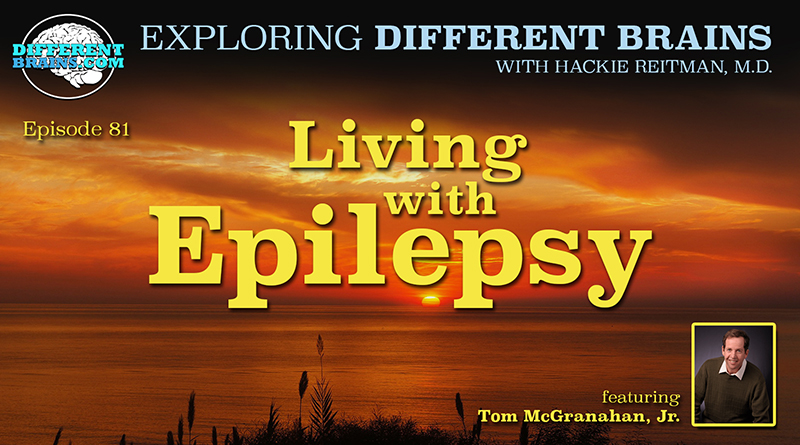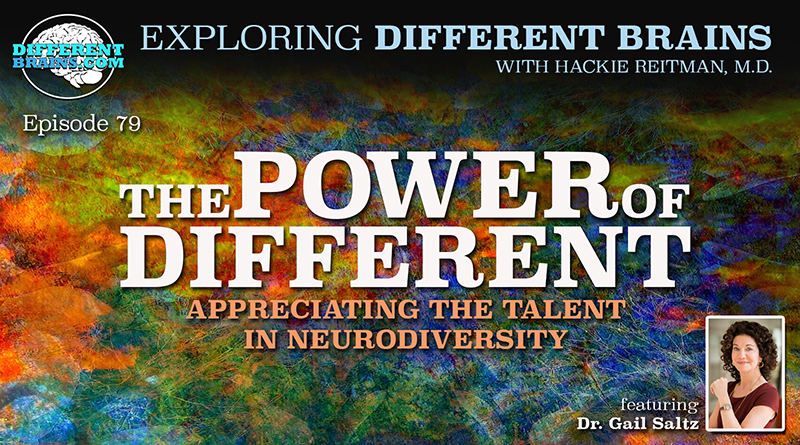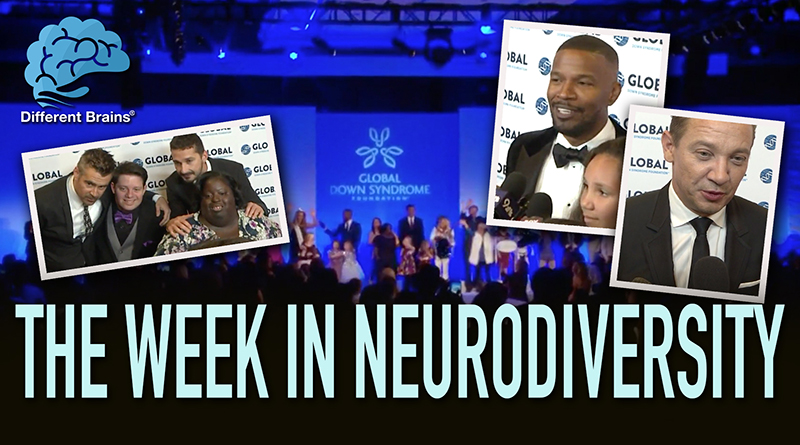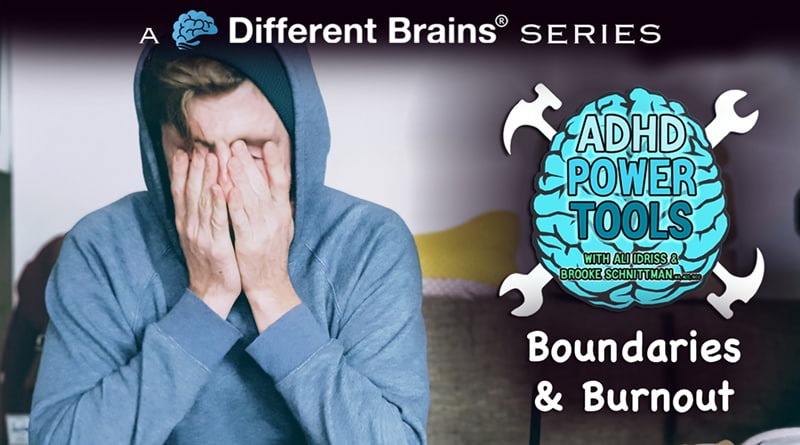
Living with Epilepsy, with Tom McGranahan, Jr. | EDB 81
(15 mins) In this episode, Hackie Reitman, M.D. speaks with Tom McGranahan, Jr. Tom has epilepsy, and is a tireless advocate for awareness of the condition. He is also the author of Under Siege: Epilepsy in the Open. Tom discusses his history of seizures, the challenges with living life having epilepsy, and his brain surgery that involved 50% of the language center of his brain being removed.
For more about Tom and his book, visit: epilepsyintheopen.com
You can buy his book on Amazon here.
Tom is also a blogger for Different Brains. Check out his articles here.
.
55 Second Preview:
.
To listen or download the podcast version of this episode, see the embedded player below.
Or look for us on your favorite podcast provider:
iTunes | Stitcher | SoundCloud
[expand title=”View Full Transcript”]
HACKIE REITMAN, M.D. (HR): Hi, I’m Dr. Hackie Reitman, welcome to another episode of Exploring Different Brains. Today, we talk with Tom McGranahan, author of this book. Which is a great book about epilepsy. “Under Siege: Epilepsy in the Open.” Which keeps with our Different Brains philosophy, of getting all this stuff out in the open so there’s no stigma no problem we can’t handle. Right, Tom? Welcome to the show!
TOM MCGRANAHAN, JR. (TM): Good morning. Thank you.
HR: Now just introduce yourself to our audience if you would.
TM: Tom McGranahan, I’m the second oldest in the family of eight. I lived in Richmond, Virginia, all my life. It’s been going good, I married a beautiful woman who cares for me and loves for me. And I’m still keeping my good looks.
HR: Opinions vary. Many say I look like Shrek but I don’t know. No you’ve got a very distinguished bunch of stuff here I want to read for our audience. You’ve got a bachelor of science in business administration. You’re a member of the Virginia State board for People with Disabilities back from 1995-99. And you speak better than me, yet 50% of the language section of your brain was removed in your fourth brain operation. And you’re really, really a great advocate for epilepsy, aren’t you?
TM: Yes I am, trying my best.
HR: Good. Why?
TM: That’s a question. Why I’ve asked the Lord he’s keeping me alive. But actually, I think it’s so I can speak out on epilepsy. It’s something that is in dire need in our society. One example is the little book I wrote. There’s only about thirty books out on epilepsy. Written by anybody with epilepsy. Whereas most all the other books are in the medical terminology aspect.
HR: When was your first seizure?
TM: Age ten, playing kickball at the next-door neighbor’s house. What happened is the–I won’t forget this, excuse me–but I ran to first base, he threw the ball to get me out. It went between my legs, tripped me up and I landed backwards headfirst o the corner of a brick. Cut my head pretty bad. for the first time ever I ran and jumped over the fence, yelling, “Mom, mom!” And I had to get 25 stitches put on my head from the fall. And a few months later I had my first seizure, woke up in the hospital.
HR: Now what was the technology at that time? What technology was available when you were ten years old? Did they have CAT Scans yet?
TM: No, the doctors came up to me and told me to be careful. The next seizure could kill me. That’s what he told me. That’s all the technology there was on it. Fear.
HR: Fear.
TM: There was no equipment. No MRIs, CAT Scans, there were very few medicines available. Mostly Dilantin, Mysoline, and just a few others. I totaled about eight or nine.
HR: How did this affect you emotionally when you had your first seizure?
TM: I was totally caught off guard. I didn’t know what to think or feel. I was looking to everybody else for answers because during the seizure, you’re unconscious. You don’t know what’s happening. You want feedback from everybody else, and nobody’s giving you any feedback. And so I was feeling puzzled about things. Like I was asking, “What’s the big deal? Why didn’t anybody talk to me about it?” I didn’t feel lesser I think being a ten year old. You don’t worry about those factors. But there’s plenty of others. Not to go too far into extremes but I heard about a girl from Australia who had one seizure. She was nineteen years old. She lambasted me when she found out that I was still driving after I had been through getting my seizures back under control under medicine, but still having them She was mad at me for driving since I kept having seizures. And I felt sorry for her because you don’t live life in fear thinking, “Oh my goodness, I could have a seizure. Better not go do this. I have a seizure. Better not do that.” You can’t let your disability or disorder limit you. Yes, you gotta’ walk your fine line, go by the doctor’s instructions and eat right, sleep right, so forth. But don’t go dig a hole in the ground and go crawl inside that hole. This gift of life is a treasure. We should all make the most–best we can of it.
HR: Now, Tom, do you get an aura before you have a seizure?
TM: I used to at times. I have had all types. I had the petit mal, the grand mal, or excuse me—tonic, clonic, and the complex partials and at times I had auras. One example’s the time I was on a 32-foot ladder. Doing some paint work. And I had an aura. And I said, “I better get off this ladder.” So I got down to the ground, and sure enough I had a grand mal seizure when I get down. It happened too many other times I’d have auras, but then there’d be times there’d be no auras.
HR: Now are you confident that you would get enough warning if you were, say, operating a motor vehicle? The difference being between if you’re climbing a ladder and you have a seizure, and you fall off, you hurt yourself. If you’re driving a or shooting a gun or something, you have the potential to hurt somebody else. How do you feel about that? How do you address that I your way of thinking?
TM: I of course take the correct actions to take to keep myself from hurting anybody else in every day activities. I don’t wreck my car into anybody, smack anybody and so forth. Anyhow, I don’t worry about the seizures. They’re going to happen, they’re going to happen, I can’t change that. I’m just going to do the best I can to go by the instruction I was told how to best behave and interact with others and so forth. But there’s nothing to be intimidated by. You don’t worry about being able to make it through the day if you’re going to have a seizure and fall down , do this, do that. You keep–I don’t want to sound religious, but you keep faith in God. And you keep faith in yourself and you’re going to do the best you can no matter what. You don’t let fears get to you.
HR: What prompted you to write “Under Siege: Epilepsy in the Open?”
TM: There’s no books out about it. My wife mentioned it. There’s no books about it. I was stunned. I only saw about ten books on epilepsy, by somebody who has epilepsy. One of them was actually–she doesn’t have it, she writes it for children who have it. I was stunned, that there’s no books out for anybody with epilepsy. I looked at the irony that I had the chance to write a book on that.
HR: Now during your fourth surgery, my understanding is you had 50% of the part of the brain that controls your language removed. And how did you prepare for that going in, and tell us about the immediate aftermath? Did you know ahead of time that they were going to be doing that?
TM: I had no idea. The first set of surgeries, they just took out what they thought might work. Since they didn’t, and I had a couple status epilepticus seizures, which you can die from. In between them I went for the second surgery. During that time, they found out I had trouble on the other side of the brain too, not just the left side. So they took out more of the left side than needed to be safe. When I woke up, I was like a five-year-old kid again, looking outside looking at the leaves and the tree, going, “Wow, look at those leaves. They look nice!” I was like, reborn. What I mean by that is, each person is affected differently through their surgeries. Mine was, I had to grow up all over again. So I had to stop the seizures. I had some memories taken away from me. One in particular was I was a basketball star, being 6-4, I was 215 pounds. I was a big guy. Played lots of basketball. All those memories are gone. But it was worth it, I don’t have any seizures. I’d rather it that way than the other way around.
HR: Six foot-four. Wow. Did you have to experiment a lot with different medications?
TM: All medications is trial and error. That’s all the doctors can go by. At different amounts and different times and different types. Right now, there’s like thirty-something medicines out on epilepsy. But you still gotta’ go through different variations of the quantity, the timing, and the connection between the–I’m on three medicines, and see through trial and error. Each person, that’s how the doctors can find out. They’ll narrow the search down to maybe 25% of what medicine’s out there that’s for their needs, but they still got the trial and error to wait and see.
HR: And many of them have rather significant side effects.
TM: Oh, yes. Very bad side effects.
HR: Now do you care to share which three meds you’re on.
TM: I’m on Dilantin, 100mgs, Lamictal, 200 mg, and Amitriptyline, 50mg a night. I haven’t had a seizure for 20 years. The last one was in November, 1992. Excuse me, 1997. And then the other thing is though I have the problems from Dilantin, medication for thirty years it now getting me close to getting nausea porosus. It’s got the side effects. But I’d rather have that problem than have the seizures. There’s a catch to it, but that’s why I exercise every other day. That’s why I eat a good diet. That’s why I make sure my health’s good. One question I’ll ask people is, “Have you ever come close to dying before?” At times. And of course, they’ll look at me like, “huh? What?” And they’ll think about it and they’ll go, “Wow, they don’t think about dying much.” Which makes sense. But I’ve come close to dying so many time, my wife reminded me of that and made me think more about this gift of life and made me appreciate it.
HR: What are the co-morbidities that you’ve become familiar with in the epilepsy community? In other words, sometimes it can occur in isolation but many times, it’s a co-morbidity with other things such as anxiety, depression…
TM: Oh, yes. Lights, all kind of variations.
HR: Yes.
TM: There’s a man I met–there’s a neurologist in California, retired, and him and I wrote my book. Also we wrote his. It was reviewed by the gentlemen in charge of the epilepsy.com. And he said his book and my book were both good end of the book ends of the shelf. My personal journey with epilepsy is the doctor explain about people finding out on it. Anyhow, him and I got to talk and know more of each other. He told me of twelve people he had that–patients with epilepsy that fell in showers and died from it. He was amazed that I had mine in the shower and didn’t fall and die. He mentioned times that people have a seizure and put their hands on the front-burner of the stove not knowing it and burn their hands real bad. He told me he talked to the person’s father and from now on he always cooks things on the backburners. So when you have epilepsy, like with all kinds of other ailments, you realize you take different steps. You have to look at things in different ways to get your journey accomplished. But that doesn’t mean you stop your journey, it means you just change it. You just look into it more about what’s necessary, what step’s best to go ahead with things. And that’s why it’s so good having family and others. And by the way, I blame my wife. I told everybody, if it wasn’t for her I’d be dead by now. I wouldn’t have been paying my taxes, wouldn’t be brushing my teeth, I wouldn’t have to do any of that stuff. But it’s a good problem to have. A lot of people with disabilities is the love and care of others that helps us through the times. And then when they see us standing strong, it helps them to stay strong. So it works both ways. It works both ways between each of us.
HR: Tom, what kind of effect has this had on your whole family?
TM: Well they didn’t give me feedback. I think a lot of it was they were amazed. They were impressed by seeing how my attitude was like, “I had a seizure, so what? What’s the big deal? Go on.” It helped them to stay positive with their attitudes when they have their ailments hit them. They have their troubles. They make them realize with my brother, he went through this and that but here I am going through this. Well I could do this. That’s one thing people need to realize and a lot of people with epilepsy do realize that, a lot of other people with disabilities do realize that. They stay strong, why? One reason is other people can see them staying strong which will give them strength, which will make them feel like they can do something. There’s the old saying, “If you don’t believe in yourself, how can you expect anybody else to believe in you?” As with epilepsy. Other people will not give me feedback on it, nobody will say anything to me on it, but I never asked them to. A lot of times, I think what comes down to it, they don’t know what to say. They don’t know what to say. My wife would just say–she doesn’t say anything negative, she’s just happy wit who I am.
HR: Well she just–your wife just tells you “take out the garbage.”
TM: Of course. Take the dog out, do this, do that, I go, “Yes dear, yes dear.” You know. We have particular roles.
HR: Well Tom, it’s been a pleasure speaking with you today. We’ve been talking to Tom McGranahan, author of “Under Siege: Epilepsy In the Open,” all about epilepsy. Tom, it’s been great. We hope you’ll come back. We look forward to you continuing to write very enlightening blogs for differentbrains.com. And we here want to help in any way to spread your message of being positive. Be positive!
TM: Yes! Is there one thing I can share?
HR: Yes.
TM: How many authors does anybody know of that have written a book after 50% of the language section of the brain taken out? How many authors are out there?
HR: Very good! Some people say that this author here is missing 50% of his brain to begin with but that’s besides the point. But we salute you and we think it’s great and keep up the great work you’re doing. A pleasure to have you here on Exploring Different Brains.
TM: Thank you, Dr. Reitman. Thank you very much!
[/expand]
This video is owned by Different Brains Inc, kindly donated by it’s original producer PCE Media LLC.
Different Brains® Inc. founder Harold “Hackie” Reitman, M.D. is an author, filmmaker, retired orthopedic surgeon, former professional heavyweight boxer, the past chairman and president (and current board member) of The Boys and Girls Clubs of Broward County, and a neurodiversity advocate. However, it was his role as a father that led to the creation of the DifferentBrains.org website.
Hackie’s daughter Rebecca grew up with epilepsy, 23 vascular brains tumors, and underwent 2 brain surgeries before the age of 5. Her struggles and recovery put him on the road to, through 26 professional heavyweight boxing matches, raising money for children’s charities (to which he donated every fight purse).
Rebecca eventually went on to graduate from Georgia Tech with a degree in Discrete Mathematics, and Dr. Reitman wrote and produced a film based on her experiences there (The Square Root of 2, starring Darby Stanchfield of ABC’s Scandal). After graduation, Rebecca received a diagnosis of Asperger’s syndrome. Hackie, shocked at his own ignorance of the topic despite being an M.D., embarked on years of research that culminated with his book Aspertools: The Practical Guide for Understanding and Embracing Asperger’s, Autism Spectrum Disorders, and Neurodiversity (released by HCI books, publishers of the Chicken Soup for the Soul series).
This experience revealed to Hackie the interconnectedness of the conditions that fall under the neurodiversity umbrella, while alerting him to the in-fighting and fractured relations that often plague the organizations tasked with serving the community. Convinced that overcoming these schisms could help all of society, Hackie forged the Different Brains philosophy of inclusive advocacy: “Supporting Neurodiversity – From Autism to Alzheimer’s and All Brains In Between”.
In the company’s initial years of operation, Hackie self-financed all of the content on DifferentBrains.org, all of which offered free to view to the public. Currently he is the host of our weekly interview show Exploring Different Brains, writes blogs for the site, and tours the country speaking at conferences, conventions and private functions, all with the goal of improving the lives of neurodiverse individuals and their families, and maximizing the potential of those with different brains. Separate from Different Brains, Hackie is the founder and CEO of PCE Media, a media production company focusing on reality based content. He recently co-executive produced the documentary “Foreman”, the definitive feature documentary on legendary boxer and pitchman George Foreman.




